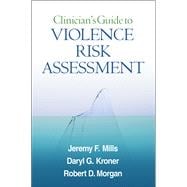Presenting a comprehensive framework for conducting a scientifically grounded violence risk assessment, this book is authoritative, current, and practical. The essentials of doing this type of evaluation are reviewed, and available risk appraisal instruments are described for general violence, sexual violence, and spousal violence. The authors provide expert advice on choosing suitable instruments and approaches for particular cases, interpreting the resulting data, and communicating with legal decision makers. A detailed outline shows how to organize assessment findings into an effective final report; a sample completed report is featured in the appendix.








